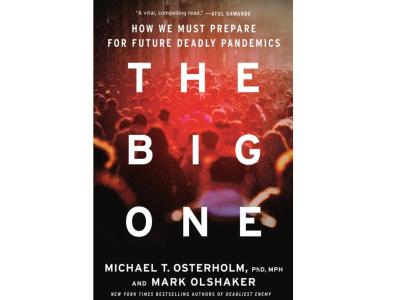MDR Pseudomonas infections nearly twice as deadly for hospital patients
A review of hospital-onset Pseudomonas aeruginosa infections in the United States found that the mortality from multidrug-resistant P aeruginosa (MDR-PSA) is nearly twice that of non-MDR-PSA infections.
For the study, which was presented at ASM Microbe 2017, which ended today, researchers used an electronic research dataset that includes microbiology/general lab results, pharmacy orders, and financial data to identify PSA isolates from blood, wound, urine, respiratory tract, gastrointestinal tract, and other sources collected at US hospitals from January 2013 to September 2015. Isolates were labeled as hospital-onset if they were collected more than 3 days after admission or through 1 day after discharge. The researchers then compared the mortality and hospital length of stay associated with MDR-PSA versus non-MDR-PSA infections.
Of 4,522 cases, 3,643 (80.6%) were non-MDR and 879 (19.4%) were MDR-PSA. Isolates recovered from respiratory sources accounted for 42.4% of all MDR cases, followed by urine (33.1%), and wound (18.3%). While the overall mortality for all PSA infections was 12.8%, the researchers found that mortality was 19.8% for patients with MDR-PSA infections, compared with 11.1% for patients with non-MDR PSA infections. In addition, patients with MDR-PSA were in the hospital for 14.3 days longer than patients with non-MDR-PSA.
Study co-author Sanjay Merchant, PhD, executive director of the Center for Observational and Real World Evidence at Merck & Co., told Infectious Disease News that the findings highlight the need for effective therapy against MDR PSA infections.
"Additionally, hospitals should consider utilizing various infection management strategies, including hand hygiene, environment cleaning and increasing heterogeneity of antibiotic prescribing, to minimize the emergence and spread of MDR-PSA resistance in hospitals," he said.
Jun 3 ASM 2017 abstract (#5262, pg. 566)
Jun 4 Infectious Disease News article
Study evaluates alternative disinfectants for C difficile
A new study by Dutch researchers in Antimicrobial Resistance & Infection Control indicates that Clostridium difficile spores of PCR ribotypes 014 and 027 strains are harder to eradicate than non-toxigenic PCR ribotype 010.
The researchers were testing four different products commonly used for cleaning and disinfecting in Dutch hospitals for their efficacy against C difficile, the most common source of healthcare-associated diarrhea and a growing threat associated with morbidity, mortality, and extra costs. The four different compounds, potential alternatives to liquid bleach (the main disinfectant used against C difficile), included:
- Hydrogen peroxide 1.5%
- Glucoprotamin 1.5%
- A mixture of ethanol, propane, and N-alkyl amino propyl glycine
- A mixture of didecyldimonium chloride, benzalkonium chloride, polyaminopropyl, biguanide and dimenthicone as active ingredients
The products, in wipe and spray form, were tested against ceramic tiles contaminated with an outbreak-related PCR ribotype (027), an endemic PCR ribotype (014), and a non-toxigenic ribotype (010). C difficile 014 is the most prevalent PCR ribotype in the Netherlands. The effectiveness was measured in reduction of colony-forming units (CFUs).
Regardless of the disinfection method, the overall CFU reduction was highest for C difficile PCR 010, followed by 014 and 027. In general, the ready-to-use wipes performed better than the sprays for all compounds, with hydrogen peroxide wipes showing the highest bactericidal activity.
"Ready-to-use wipes eliminate the possibility of human errors that could make the disinfectant less effective or make the wipes unnecessarily toxic," the authors write.
The authors say the findings indicate "the importance of including a variety of clinically relevant ribotypes when evaluating the effects of disinfectants against C difficile."
Jun 3 Antimicrob Resist Infect Control study














